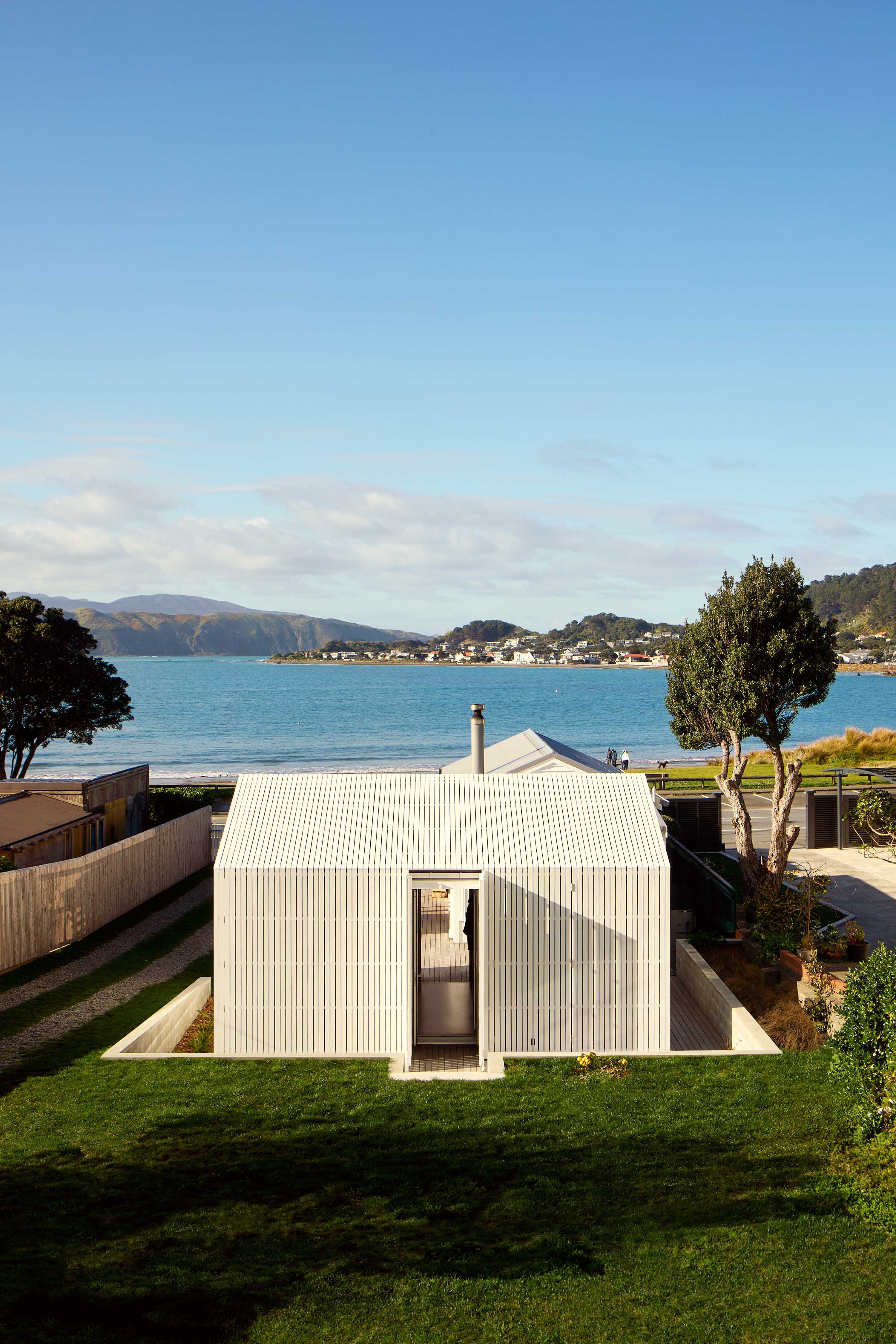

“This project began as a curious kind of inheritance,” wrote Luke Pierson in the notes that accompanied the entry of his house at Worser Bay, Te Whanganui-a-Tara Wellington, into this year’s Here Awards. “Not of property, but of stories.”
A few years back, Pierson bought a house across the road from the beach. It was an estate sale. The house had been owned by an elderly fellow named Hank who kept canaries and – as it turned out – was friends with both of Pierson’s grandfathers, albeit at separate times. One grandfather knew him through the community. More recently, the other played cards with him in retirement in a 1940s sergeant’s cottage that Hank had moved from around the corner and onto the front of the property in the early 2010s. His daughter lived in the main house and he moved into the cottage.
Pierson turned to Tāmaki Makaurau Auckland-based Guy Tarrant to build a new house on the site, after seeing a home in Westmere that the architect had designed, and which he liked very much. Pierson is no slouch when it comes to architecture and has excellent taste, having built a few houses previously, including a celebrated duplex in Kelburn which featured in issue 13 of Here. “I like building things,” he says. “I liked that it was a big site with lots of options but, fundamentally, I’ve just always loved this area of Wellington.”
Pierson has three children, two of whom are still school age and who spend half their time with him. It made sense to develop the site in such a way that it could accommodate more than just one big house. Plus there are spectacular views from the top of the section. “He wanted something of an urban farm,” says Tarrant, “with multiple buildings occupying different parts of the site.” Whatever he built needed to expand and contract as the family needed. Little did anyone know, the answer was sitting on the front lawn.
When Pierson bought the place, the original bungalow was too far gone to save. He had it demolished, salvaging the rimu sarking to use it in something new. The sergeant’s cottage stayed, as did an original concrete garage on the front of the property, while he and Tarrant worked on new plans for a house up the back.
So, while various iterations came and went, Pierson was living in a rented townhouse. Eventually, Tarrant’s wife, architectural writer Debra Millar, suggested Pierson renovate and move into the cottage as part of a staged occupation of the site. “I liked that because a big driver was getting the kids here as early as possible, and getting them to be here, and grow up on this land and as part of the community,” says Pierson. “They’re growing up here – it’s the place, not just the house.”
It’s a lovely idea, but at 33 square metres, the cottage was obviously too small. From the get-go, Tarrant decided not to expand it. It has charming proportions, though it was small and internal, with tiny square windows and an odd layout. Instead, he proposed renovating it, keeping as much of the original fabric as possible, and adding a generous covered deck to the front. Perpendicular to that, he designed a second dwelling – which is known as a sleepout but is much nicer than that – reached across the deck. “It was really about how small could we go?” says Tarrant. “We knew we would need another little building, but then the question became how small can that building be?” It was also about keeping things simple: Tarrant almost seems surprised by how well the project has come together.
The space between the houses was crucial to making it work. The sleepout had to be close enough to the new building that you could move easily between them, but pushed back enough to allow afternoon light to skate over the roof and reach the deck. “The whole idea is carried by the space in between them,” says Tarrant. “It’s about the relationship between the buildings – it creates a kind of tension that I really like.” Because it sits across the land, Tarrant also thought it important to be able to look through it, creating long viewshafts down the site.

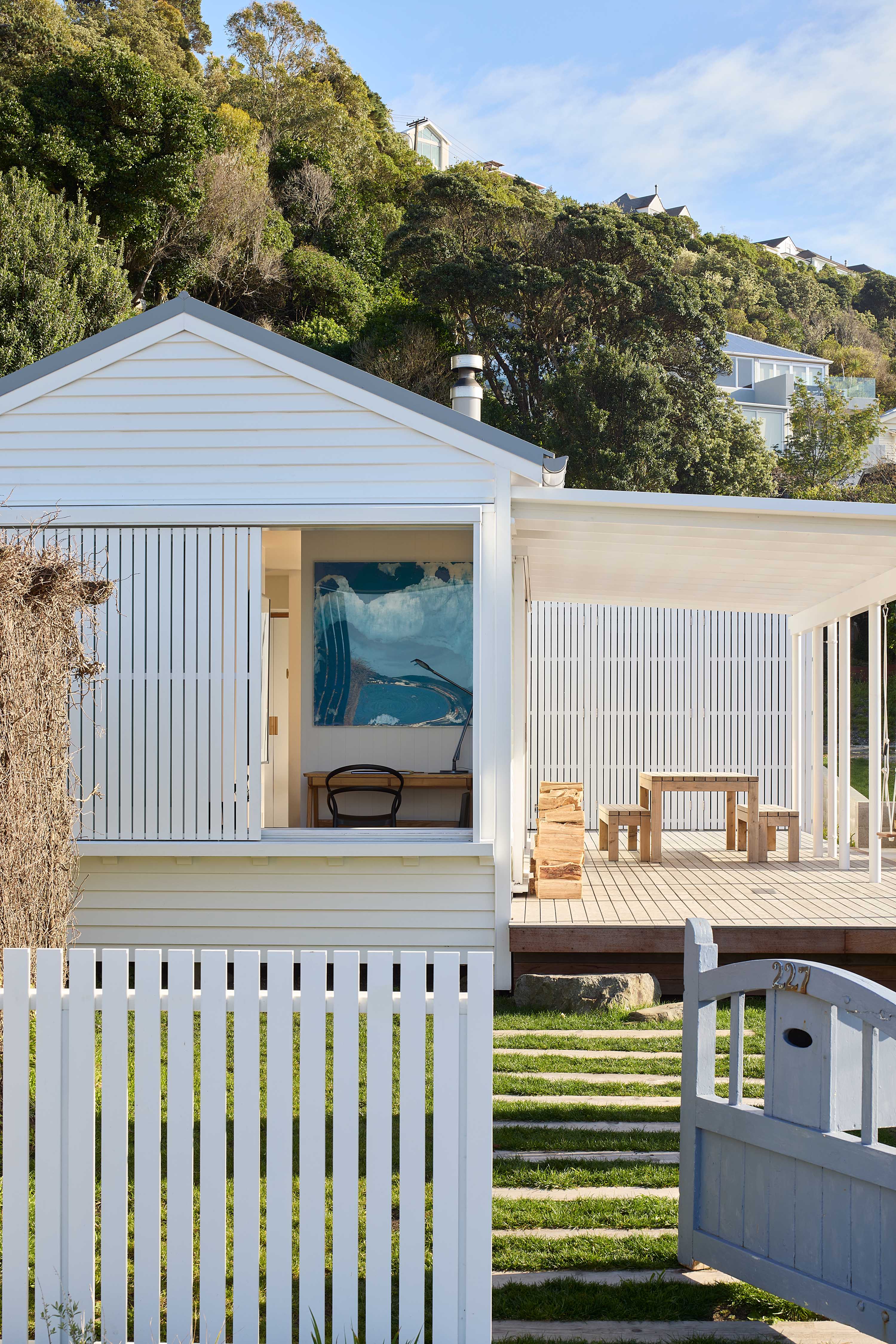


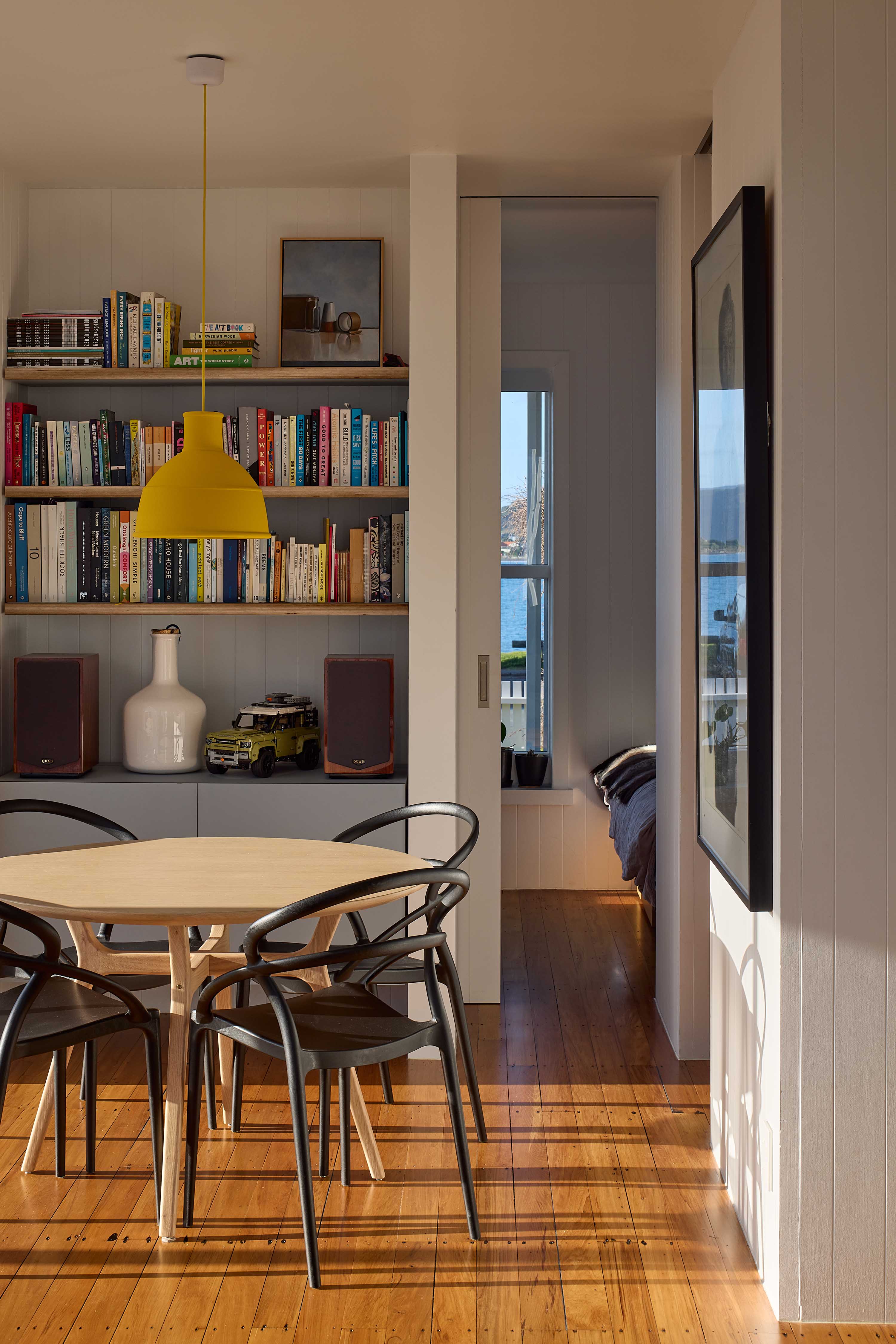
Together, the two buildings still only add up to 66 square metres. There’s a kind of radicalism to Pierson’s occupation of the two buildings, both in terms of the square metres, and the way you must go outside to move between them – in all of Wellington’s many and varied seasons. We do that at the bach, right, but at home? In Wellington?
In summer, the whole place opens up onto the big covered deck, and the outside dining area hosts family and friends. In winter, it’s intimate, cosy, with the fire going – and on a rainy night, you will get a bit wet going between them. “The main thing is just the joy of less,” says Pierson. “The beauty of simplicity.” Tarrant is now working on another iteration of the plan for the house up the back. The success of the cottage renovation – possibly to Tarrant’s regret, it’s hard to know – has surprised all of them, and has led to Pierson building less house at the top of the site. “If I can live this well in 66 square metres,” he asks, “then why do I need 300?”
The original cottage has a small bedroom at the front, sized to the length of a queen bed, with a generous window facing the sea. There’s also a small living space with a woodburner and a built-in window seat, a kitchen and a small scullery. Generous sliding doors open the space up to the covered deck, which is almost as big as the cottage itself. Across the deck, the sleepout has a main bedroom, again sized to the length of a queen bed (with doors either side for access), and a bunkroom. “It’s a simple idea,” says Tarrant. “It was just about doing something that didn’t look like we were trying too hard.”
It works because, apart from anything else, it’s just so bloody beautiful. The cottage now feels like the best version of itself, all white-painted timber and tongue-and-groove lining, plus the original rimu floorboards. With new weatherboards and chunky wooden joinery, as well as simple cabinetry pieces made from HPL ply in a pleasantly mid-century sort of green, it’s restful.
The sleepout is an abstracted version, with similar proportions and an identical roof pitch. To the cottage’s horizontal weatherboards, Tarrant replied with vertical white-painted timber screens and shutters that close the whole thing down completely. “You get this beautiful dappled light,” he says. “It’s a porous effect but it also makes it very private – there’s something quite lovely about that.”
Inside, it’s lined with the old house’s timber sarking, denailed and remilled, then painstakingly applied to the walls, floor and ceiling. That was Pierson’s idea, and there was one mill in the lower North Island that was willing to do it. “It really was a response to the exterior,” says Tarrant. “We thought, we’ve got a mono cladding on the outside, so we’ll have a mono cladding on the inside. And that’s all we’ll do.” When Pierson first suggested it, Tarrant told him it would be expensive, which is one reason it doesn’t get done very often. “Yes,” said Pierson, “but it will also be very beautiful.”
The original garage has received a lovely timber front door, painted bright yellow, while the front gate – carefully stored away during construction – has been repurposed. “We kept it because both of my grandfathers had their hands on it,” says Pierson. “It’s a small thing, but it’s the one part of the place I didn’t want to change. Because this isn’t just a renovation – it’s a rebuild, with memory built in.”
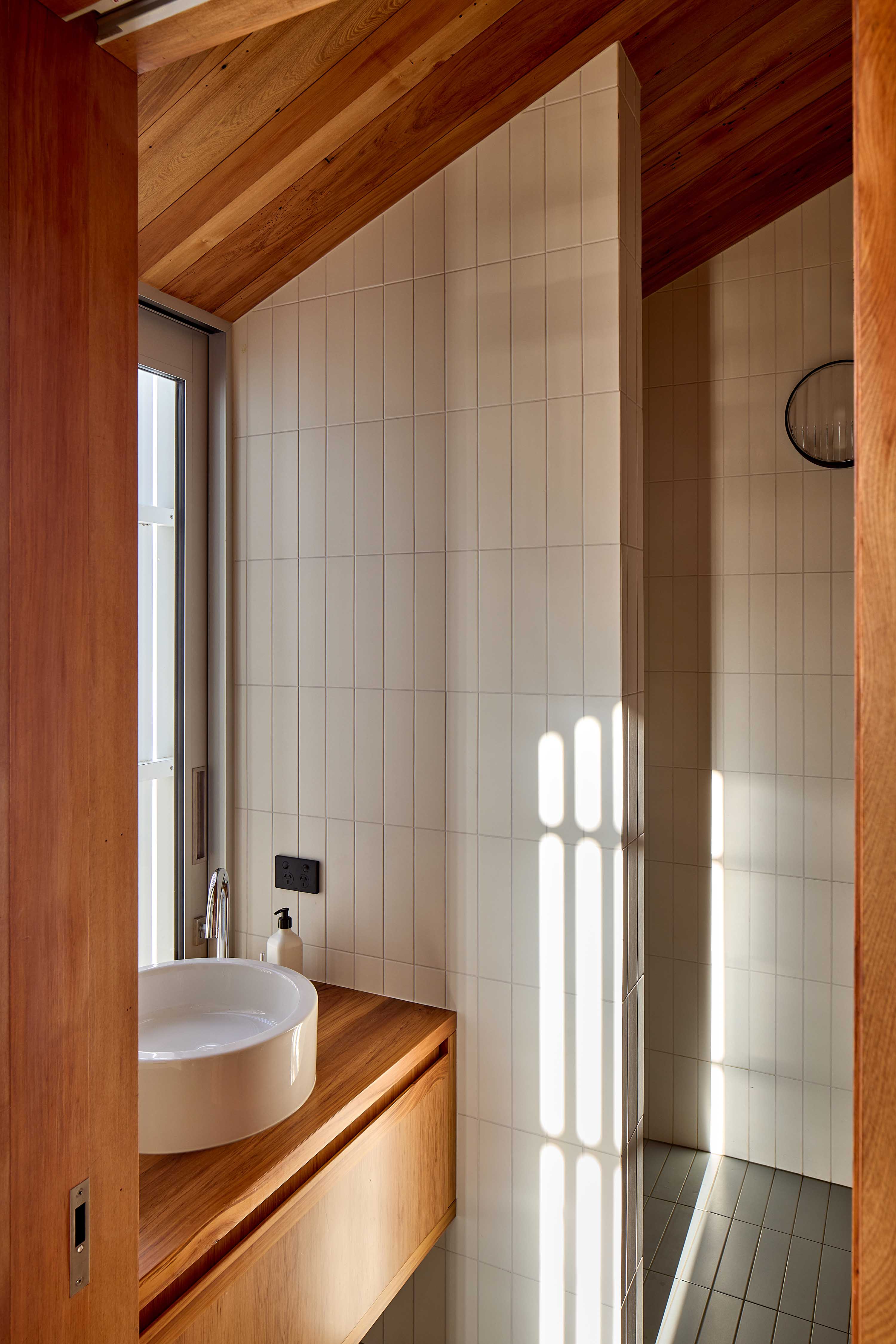
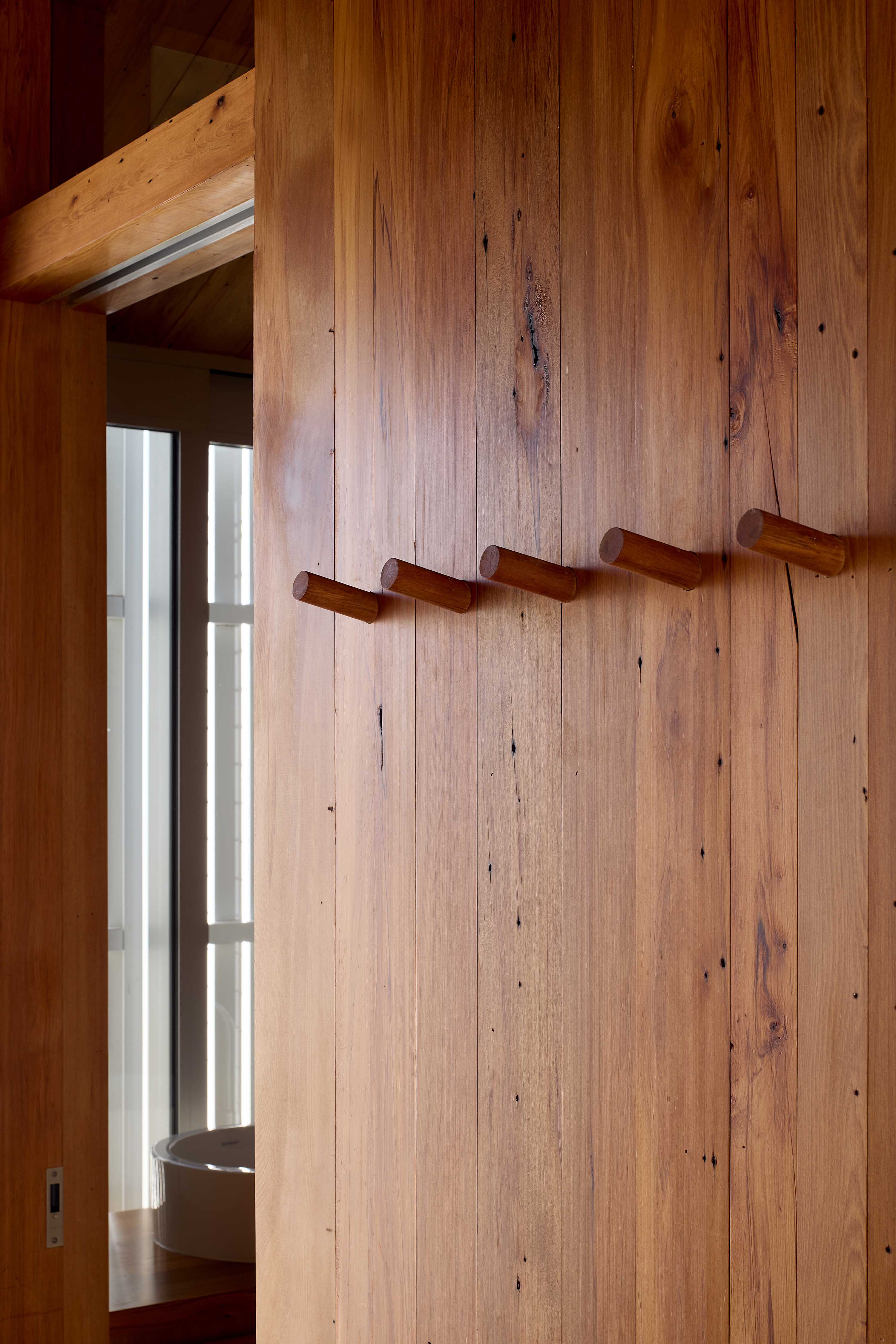
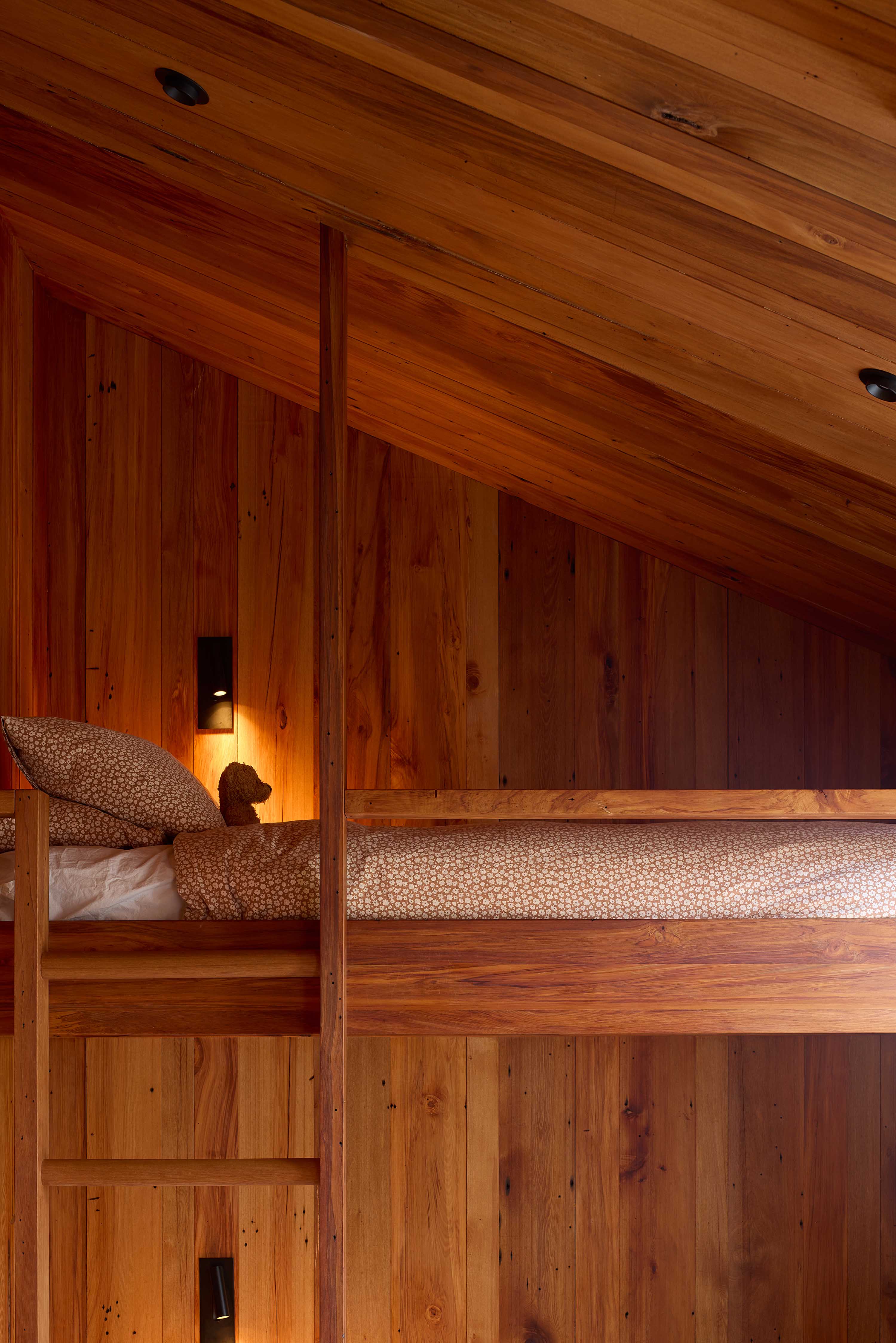
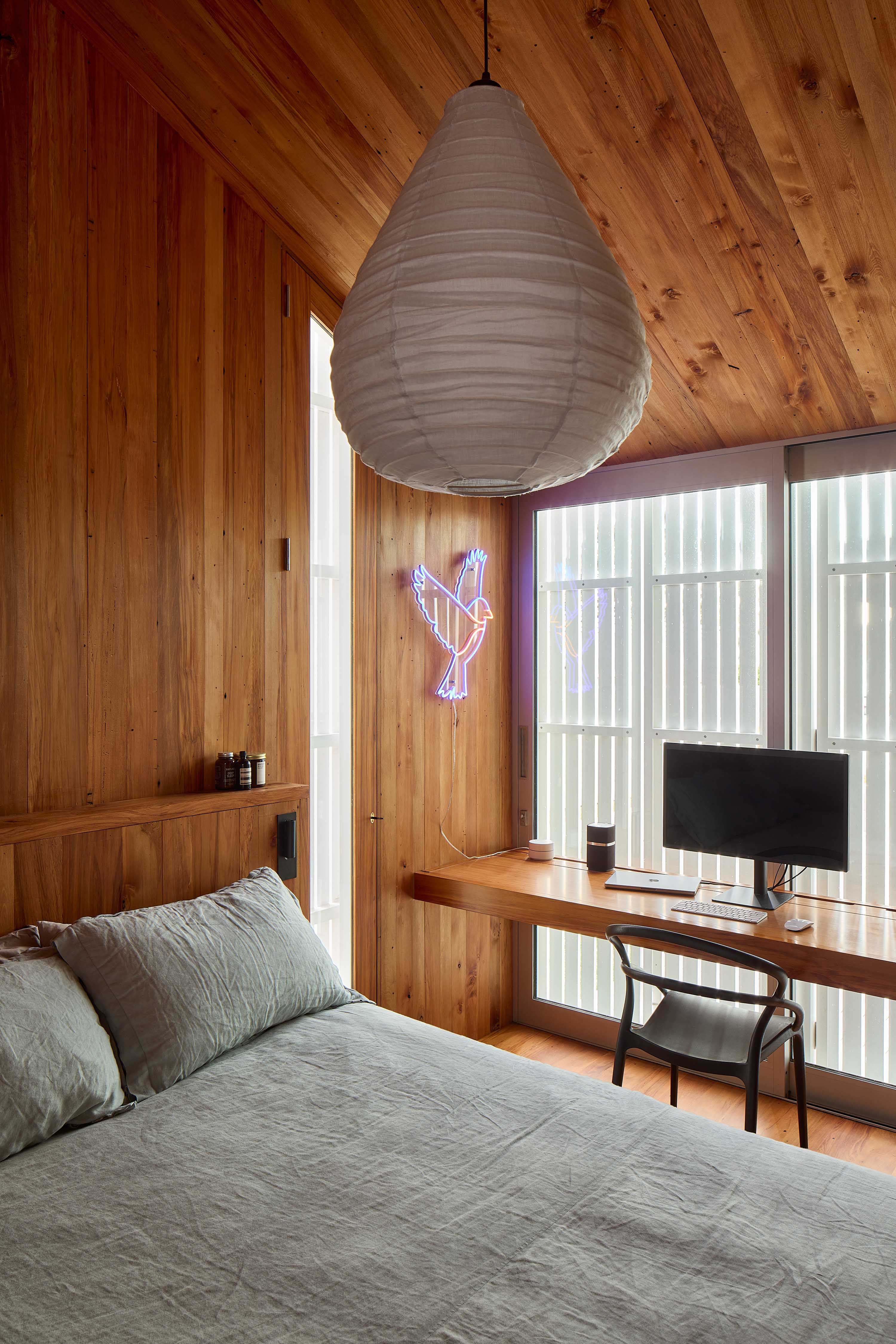
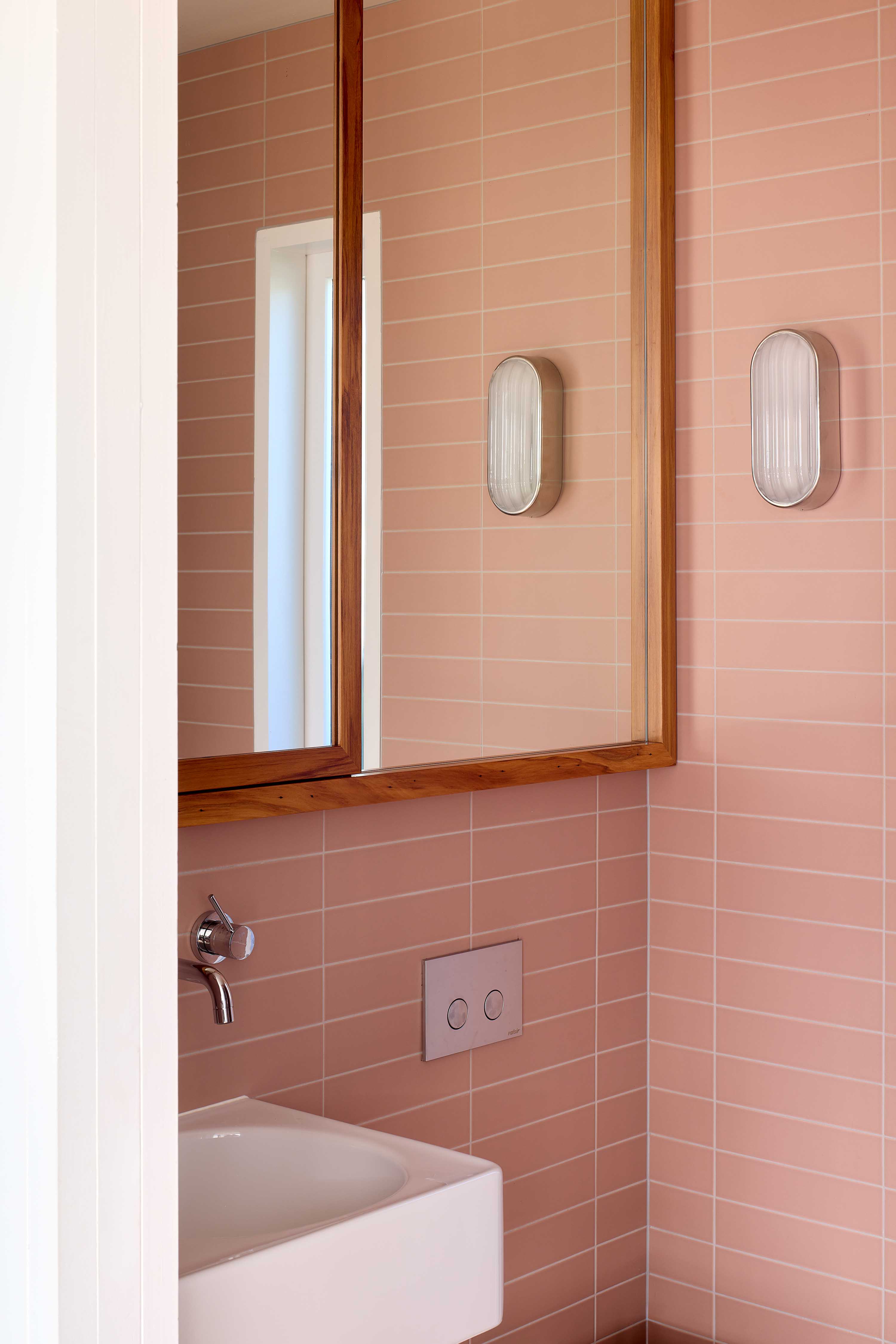
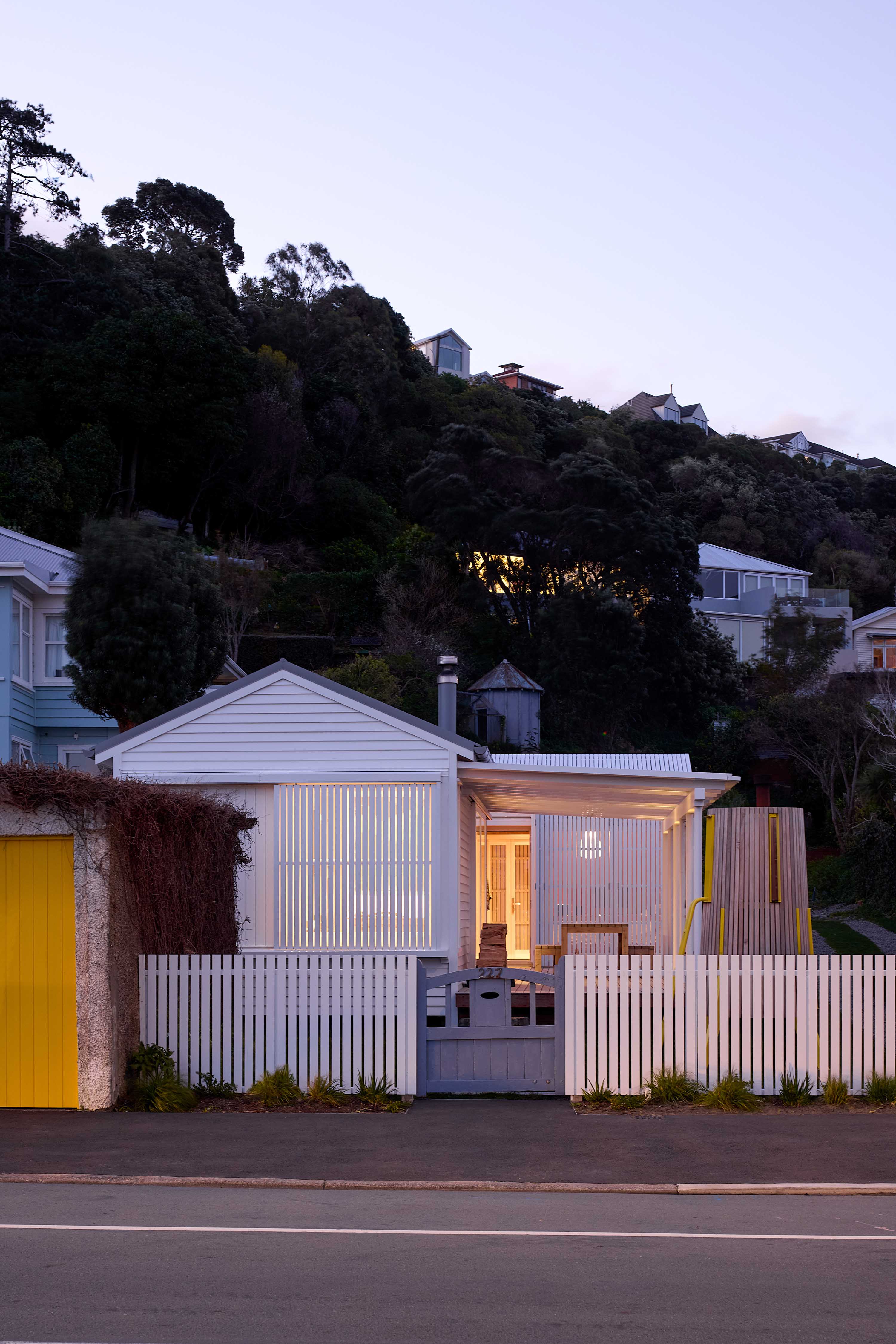
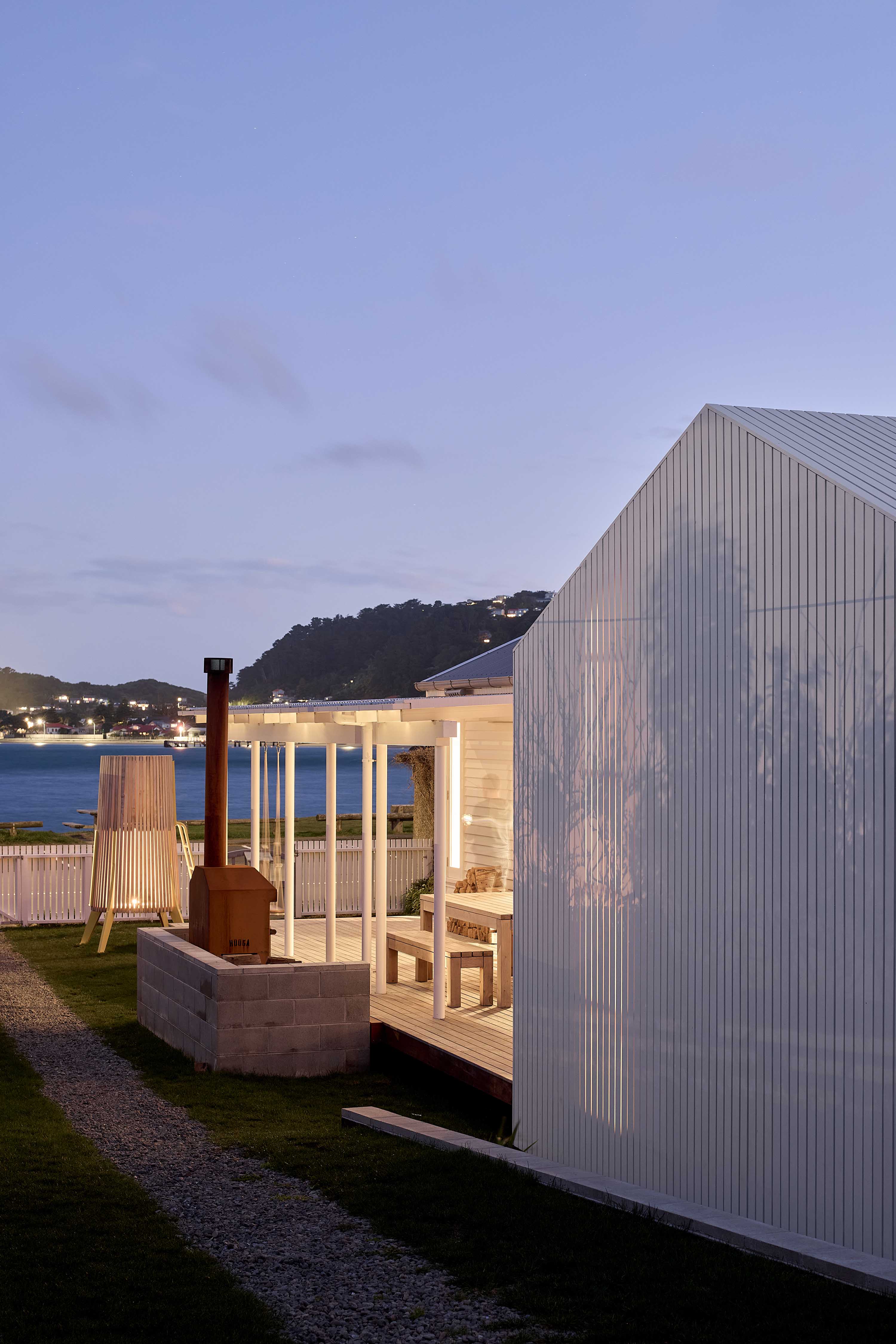

1 Deck
2 Bedroom
3 Bunk room
4 Bathroom
5 Living
6 Dining
7 Kitchen
8 Laundry
Related Stories: